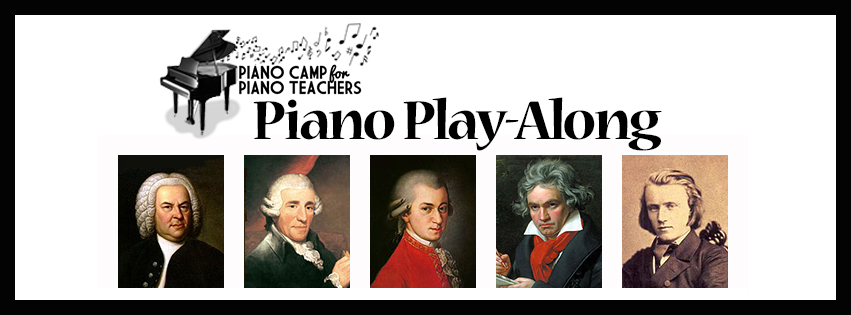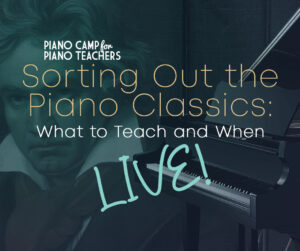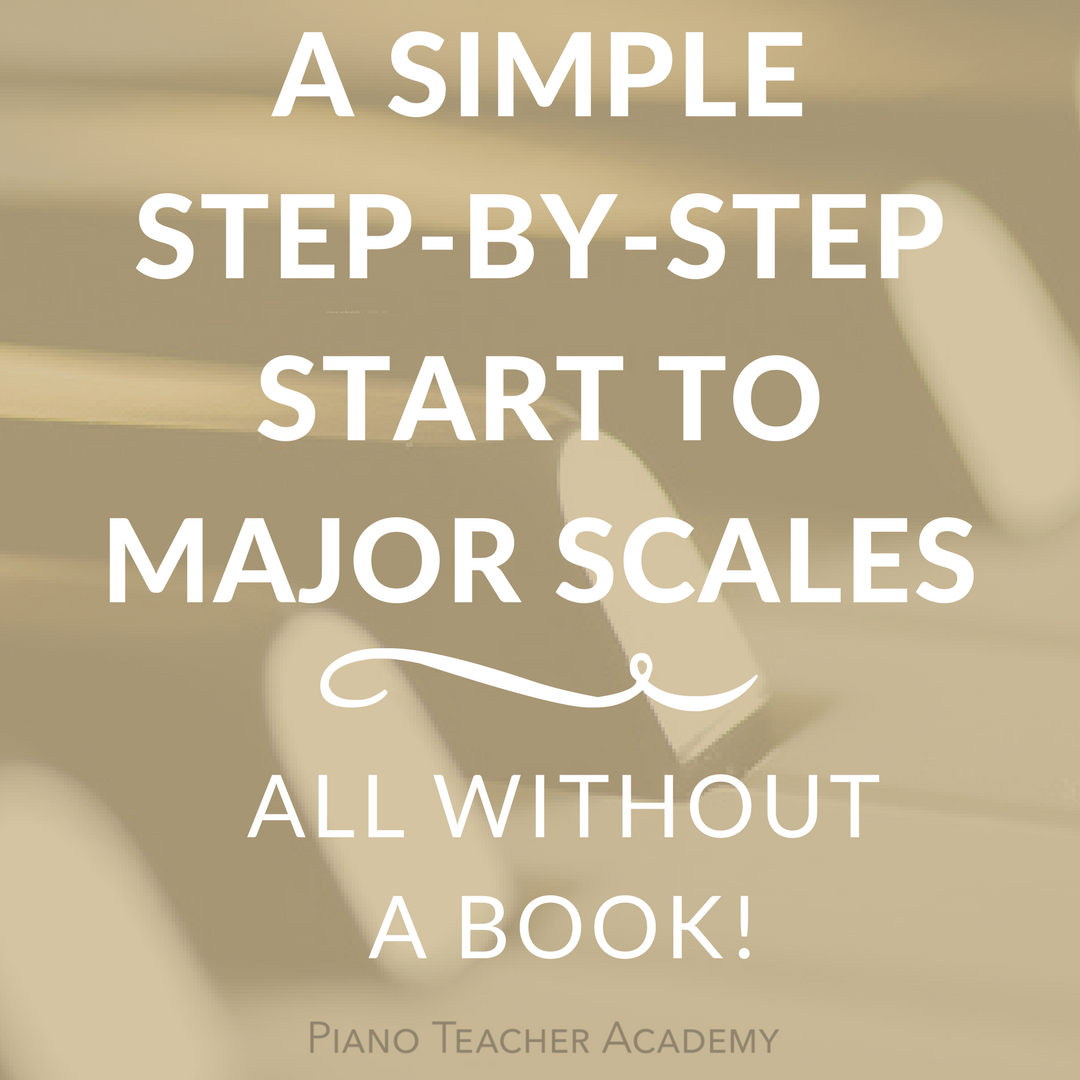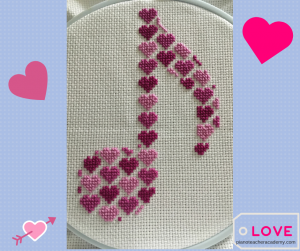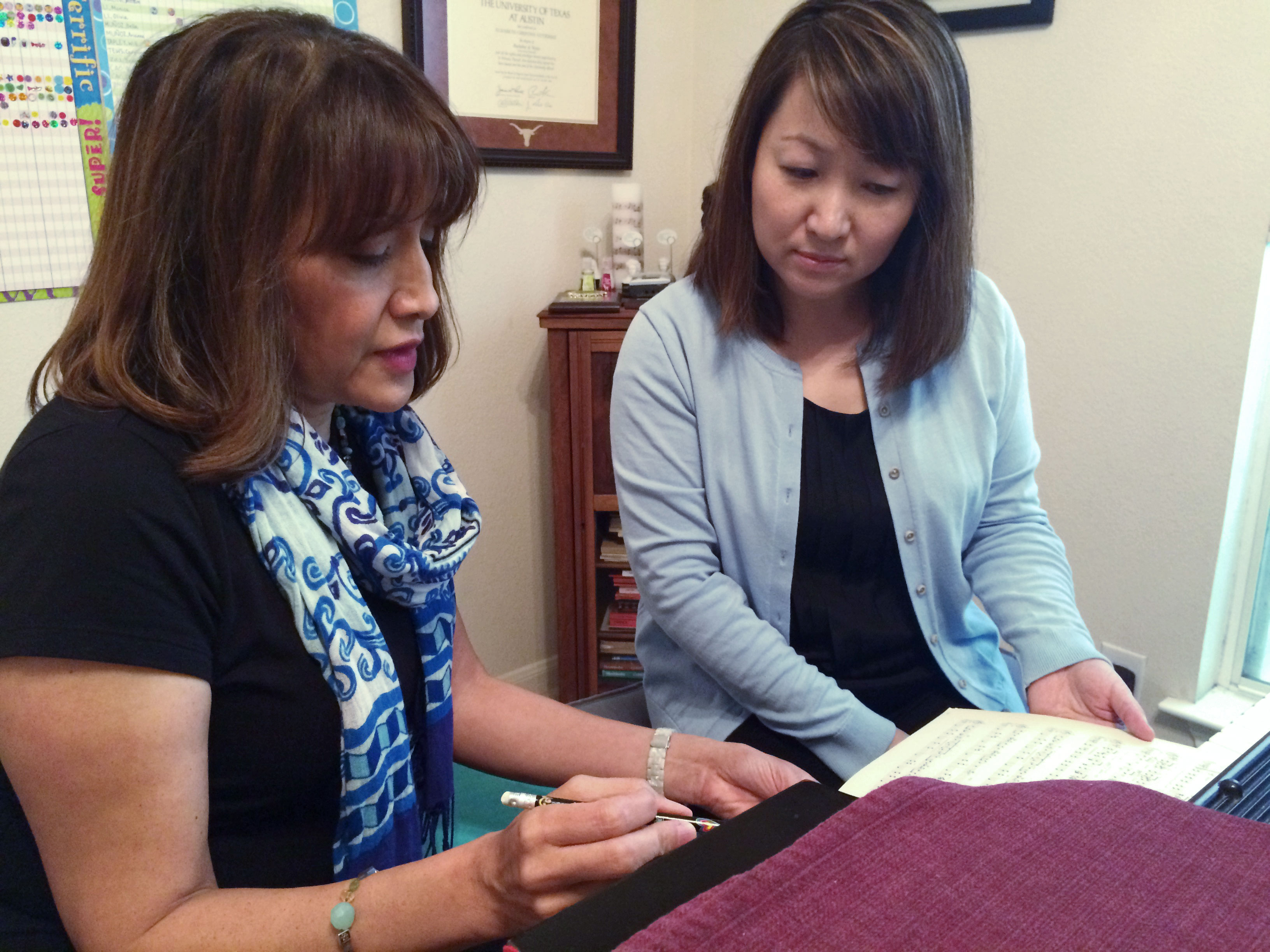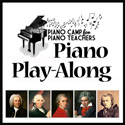Kabalevsky, Op. 39, Play-Along: Post Three (Nos. 5 – 8 Reaction)
It’s time for the SECOND reaction post for the Kabalevsky Piano Play-Along! Are you playing along? If so, let me hear from you, even if only to register a “thumbs-up” on piece(s) that grab you. I will answer the questions posted on Post Two soon!
Did you miss my first reaction post? You can read it HERE.
Quick scan thoughts:
The pieces here are longer than the first four (except no. 8), but highly patterned making it easy for the player to navigate and make sense of the material. Though it looks much harder, No. 5 – A Little Joke, is one of the easiest Op. 39 Kabalevsky pieces to play and memorize (more on this below). Kabalevsky still highlights treble clef reading in both hands in these pieces (except for no. 8), or at least playing in the middle to upper registers. It seems to add a lightness to the character as does his meticulous use of staccatos, slurs, tenuto, etc.
Thoughts while playing….
No. 5 – Playing (I see “A Game” as the title in a different edition, though I do see “Playing” more often in other collections)
I think of kids jumping about when I play this frisky staccato etude. This is the first time Kabalevsky has the hands alternating and the key of B-flat major could be a little tricky for some elementary students if they haven’t worked with it much. Though it’s marked forte, I would still emphasize a lighter, bouncy staccato and would aim toward a quick tempo of one pulse per bar.
Here’s a short video of some blocking maneuvers I would have a student perform in order to understand the general motion of the hands as they travel. It would also help the student solidify the fingering which Kabalevsky has abundantly provided in the authentic edition.
First you will see blocking of measures 1 – 8 followed by a 2nd blocking maneuver for measures 8 through 14. The latter helps declare the LH as the leader in the phrasing at this point.
No. 6 – A Little Joke (often called “Scherzo,” “A Little Scherzo,” “Running Along,” etc. in other collections)
This piece falls into the “plays easy, sounds hard” category though it doesn’t appear that way at first glance. Point out to students how the hands remain in a stationery position at first and then travel together downward by step (2nds). Blocking the chord shapes helps illustrate this point.
Once students get the hang of this piece, they just love it and can’t wait to play it faster and faster. Warning: they typically want to rush mm. 9 to the end. A metronome, counting aloud, and slow, very steady practice can easily prevent it. Start the piece quite slowly at first, emphasizing articulation, and gradually increase the tempo each week. Polishing each hand alone is important for matching the articulation. The major idea here is to acquire the difference in sound between the two-note slur and the staccatos that follow. Keep working on the “drop-lift idea” for two-note slurs. The wrist should move forward off the keys (toward the fallboard) as much as the tempo may allow.
Here’s a young student working on this idea:
Ignore the flying R.H. pinky above. We’re working hard on relaxing it!
No. 7 – A Funny Event (seen in some collections as “Conversation”)
This dialogue piece definitely has a “ha-ha” or “hee-hee” implied while the hands perform a copy-cat. I often tell young students to add words to the motives to achieve the back-and-forth banter between two people. They have fun with it.
This is all about bouncing the hands up and down on the keys to achieve a wrist/forearm staccato motion. Finger staccato alone would slow the bounce effect and it might add some tightness to the sound. You could definitely block each measure to navigate the matching movement of the hands (and block 2 mm. segments, both hands simultaneously if you like) Naming occurences of 5-finger patterns also helps.
Here’s a young student demonstrating a tapping technique for developing an awareness of forearm staccato, and then applying it in context.
Notice how he didn’t bounce on the F#, but instead tried to reach for it? We’re working on a direct vertical bounce on any key, black or white. Requires trust in your aim.
No. 8 – Song (seen in some collections as “Conversation”)
Quite a sad tune, isn’t it? I ask students to describe the type of song and create a story around it. The young student in this video said this song sounded lonely, as if someone didn’t have anyone to play with. Clever. She continued by adding that the melodic movement had hills and valleys as if the person was searching for her friend by walking to the top of a hill to look and then back down again (Andante, hence the “walking”). I expanded by saying that she needed to reflect this idea in her sound (yay! – instant phrase shaping achieved by an imaginative picture). I also pointed out that the crescendo in m. 5 sounded like it was leading to “hopeful B-natural” rather than the “sad B-flat” from before. But then all didn’t end well in the last 2 measures, did it?
In this video, the student is trying to capture the shapes of the phrases while remaining as legato as possible.
Playing the hands two octaves apart is quite a different physical feel for kids though the resulting sound is a much more satisfying. The student in the video was disappointed in her final octave (written legato, though too big of a stretch for her). She said she needed to make her hands more like “rainbows” and arch them as if she really could reach the octaves. This is why I love working with the kiddos.
Are you participating in this play-along? What are your thoughts on Nos. 5– 8?
Play-Along Schedule:
- Introduction Post: June 1
- Kabalevsky, Op. 39, Nos. 1 thru 4 reaction: June 2
- Nos. 5 thru 8 reaction: June 9
- Nos. 9 thru 12 reaction: June 16
- Nos. 13 thru 16 reaction: June 23
- Nos. 17 thru 20 reaction: June 30
- Nos. 21 thru 24 reaction: July 7
